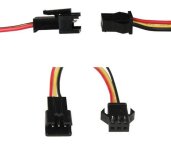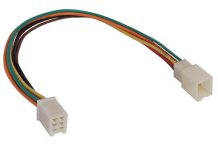Helly everyone,
as I am approaching the ordering stage for my first 2 builds, I am wondering about the different connectors and cables I should get to fiddle around with.
Are there any standard connectors used on the batteries, the controllers and the motors?
Do the connectors used by chinese manufacturers differ?
I had a connector on my chinese LED light, which was screw on that really bugged me because it was like 5 whole turns to actually tighten it. Instead, I got one from an RC-shop, which works fine.
I am also wondering about the battery connectors, the different e-bike producers like BioniX, Panasonic and Bosch use? Are they proprietary or do they adhere to some standards?
How about the wires between controller and motor? Any standards there.
My main concern is to have the motor and controller delivered and finding out that I should have orderd some additional cables and connectors to go along with it, in order to be able to get the lengths right and get a clean installation.
Thanks guys.
as I am approaching the ordering stage for my first 2 builds, I am wondering about the different connectors and cables I should get to fiddle around with.
Are there any standard connectors used on the batteries, the controllers and the motors?
Do the connectors used by chinese manufacturers differ?
I had a connector on my chinese LED light, which was screw on that really bugged me because it was like 5 whole turns to actually tighten it. Instead, I got one from an RC-shop, which works fine.
I am also wondering about the battery connectors, the different e-bike producers like BioniX, Panasonic and Bosch use? Are they proprietary or do they adhere to some standards?
How about the wires between controller and motor? Any standards there.
My main concern is to have the motor and controller delivered and finding out that I should have orderd some additional cables and connectors to go along with it, in order to be able to get the lengths right and get a clean installation.
Thanks guys.








